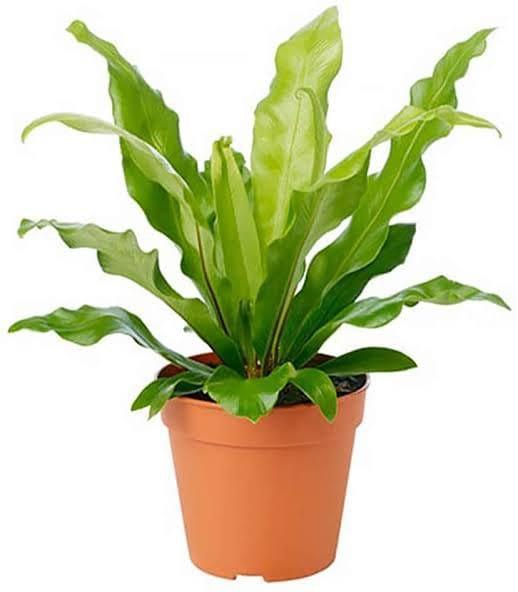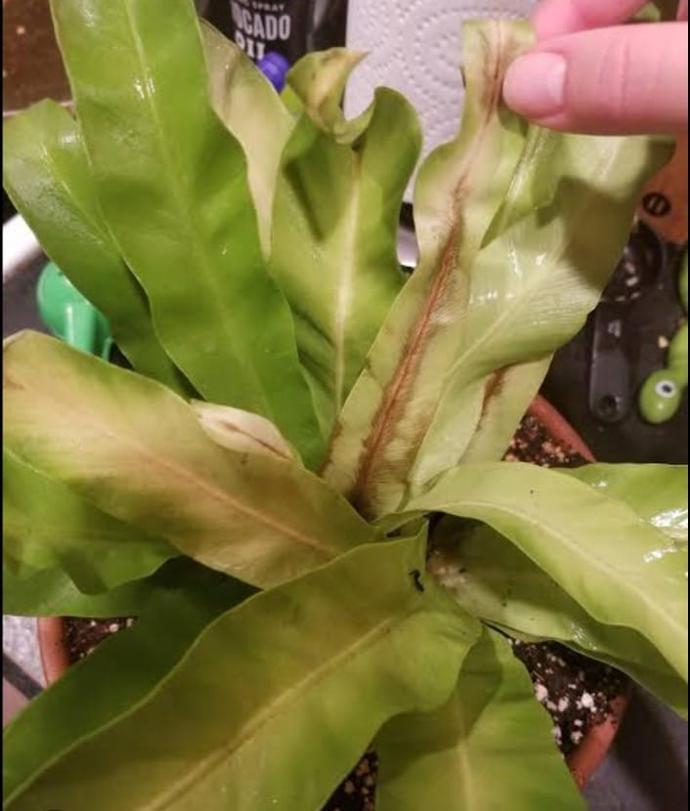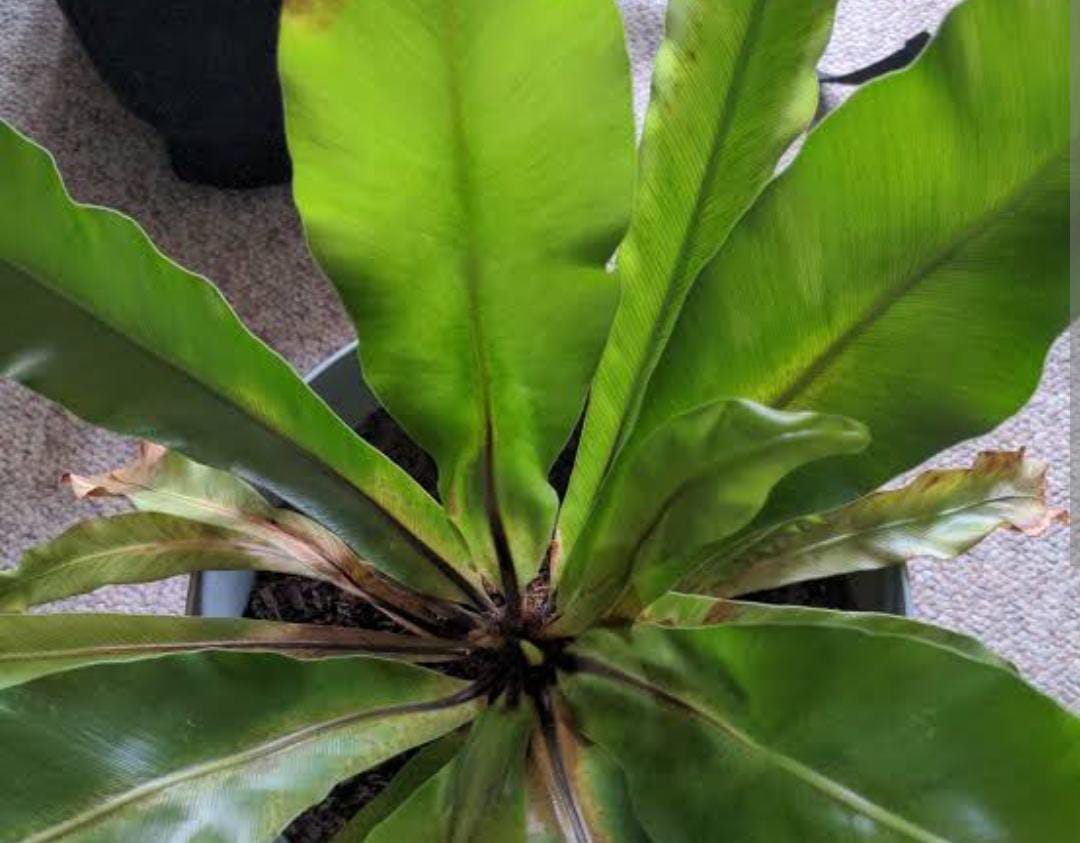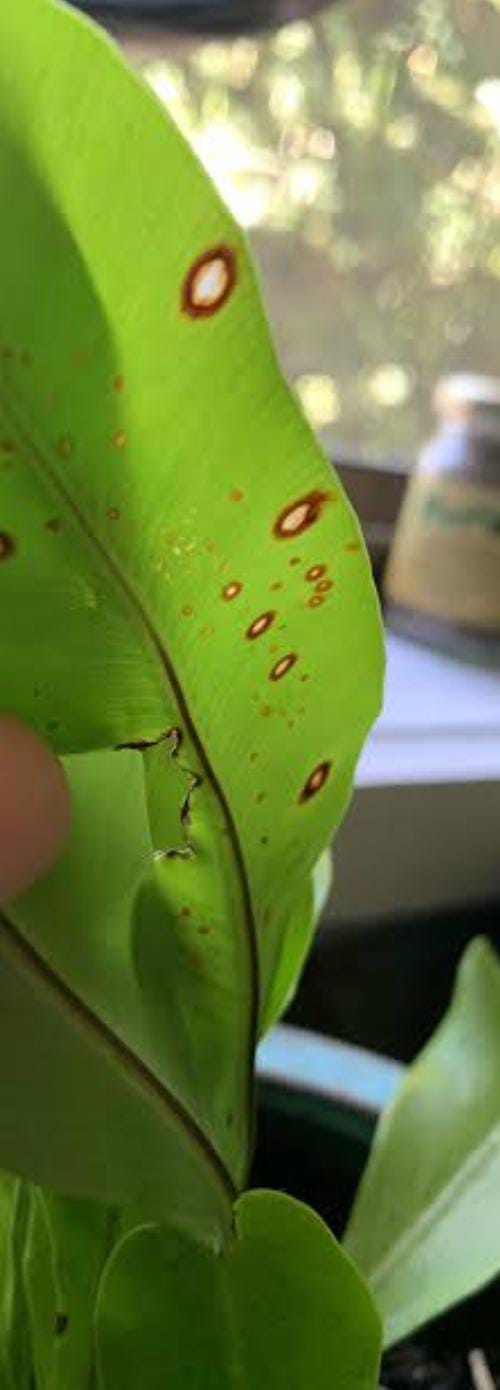Bird Nest Fern Plant
Bird Nest Ferns thrive in low to moderate light and well-draining soil. Keep the soil consistently moist, but avoid waterlogging. Provide high humidity by misting the leaves. Regularly clean the fronds to remove dust. Pruning can help remove old or damaged leaves.

Habit
Perennial
Height
0.5-1 m
Growth
Moderate
Soil
Well-drained, humus-rich soil
Shade
Bright, Indirect light
Moisture
Moist
Edible
No
Medicinal
No
Origin
Tropical Asia
Climatic Condition
Tropical
Temperature (°)
20-30°C
Humidity (%)
70-80%
Potting media
Peat-based mix
Fertilizers
Organic compost
Watering
Water regularly; keep soil moist, but avoid waterlogging
Plant Weight
0.5-1 kg
Flowering Time
Year-round
Soil Ph level
5.5 - 6.5
Water Ph level
5.5 - 6.5
Soil EC
0.3 - 0.7
Yield Per Plant
Ornamental use
NPK ratio
10:10:10
life Span
Perennial
Health Benefits
Ornamental plant; used for air purification.
Suggested Grow Media or Potting Mix ?
50% peat moss, 30% perlite, 20% compost
Suggested Fertigation/Fertilizers
Fertilize every 2 weeks with a balanced, water-soluble fertilizer.
Common Diseases and Remedies
Southern blight, root rot. Botrytis blight.
White to yellow patches on leaves, grey spot.
NSKE, cow urine.
HEALTH BENEFITS
Rich in Antioxidants: Helps neutralize free radicals and reduce oxidative stress.
Supports Respiratory Health: Used in traditional medicine to treat asthma and cough.
Boosts Immunity: Contains compounds that may enhance immune system function.
Wound Healing: Crushed leaves have been used to treat wounds and skin infections.
Digestive Aid: Used in herbal medicine to ease stomach discomfort and ulcers.



